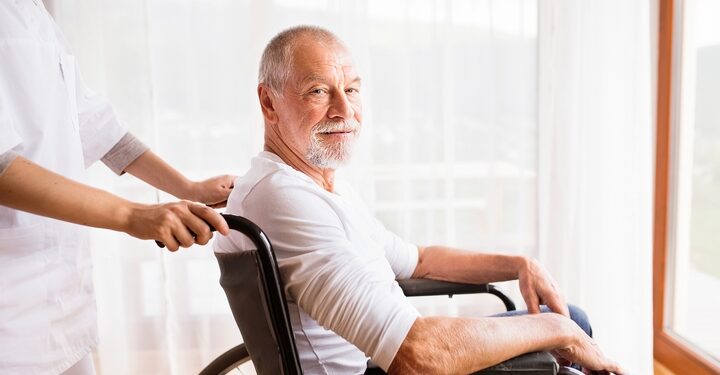6 Mobility Aids for the Elderly and Their Features

As we age, the body naturally starts to break down. The wear and tear from decades of use begins to show. The result is weaker joints, atrophied muscles, nerve issues, and pain. Furthermore, a senior may experience issues relating to medications they’re taking or already be dealing with an injury sustained from a previous incident. Mobility aids allow you to navigate around your home, get to and from places in the community, and drastically reduce the risk of a fall while improving your quality of life.
Every year, 1 in 4 seniors will experience a fall. A fifth of those result in severe injuries to the head, broken bones, or hip fractures – any of which can be immobilizing and dangerous for a senior. Falls not only cause injuries, but seniors are slower to heal, could struggle with muscle atrophy after the fact, and could permanently worsen symptoms of different health conditions. Every precaution is essential to preventing falls, and with that, any person 65 years of age and older should at least consider regular use of mobility aids.
For senior citizens, assistive devices and mobility aids can help individuals struggling to get around or at high risk of a serious health issue if they experience a fall. It does depend on the individual as to what mobility aid is best for their size and needs. As more people use mobility aids as they age, it’s important to know what’s available and the advantages of each tool.
Here are the most common mobility aids for the elderly.
Canes

Canes are a go-to mobility aid recommended by clinicians for elderly people with minor issues moving around or who need that extra stability. Canes are advantageous as they improve standing tolerance and gait, allowing the user to offload weight from a weakened or pained limb.
The drawback to canes, however, is that they are the least stable of what’s mentioned here on this list. A user must have significant upper body strength to use canes safely, and not all seniors are in that position nor are interested in the effort.
Chair Lifts

Chair lifts, or stair lifts, help to move people up and down stairs along a guided rail. A fall down the stairs can prove extremely serious for a senior with limited mobility and an increased fall risk.
A chair lift for seniors is one of the best mobility aids. It can prevent hundreds of thousands of falls that seniors take every year. They are a safe way to get from one floor to the next, reducing the potential for injuries while taking pressure off the joints and body.
Walkers

Walkers are a favoured mobility aid for the elderly. They provide a large support base, perfect for an individual struggling with balance, limb weakness, and/or putting full weight on their legs. A wheeled walker is easier to move than a walker with no wheels.
A two-wheel walker is the gold standard in terms of maneuverability. A four-wheel rolling walker, also known as a rollator, is better for seniors who require rest breaks. However, they are generally not as stable as a two-wheel walker.
Wheelchairs

Wheelchairs are for seniors who lack lower body strength, balance, or endurance. Wheelchairs have to be properly sized. Users must also know how to properly use them to avoid unnecessary discomfort. Manual wheelchairs require a lot of upper body strength and coordination to use.
Fortunately, electric wheelchairs, or power chairs, do not require any upper body strength and are much easier to use if you have a strength-related health issue.
Mobility Scooters

Moving beyond power wheelchairs are mobility scooters or power scooters. This mobility aid is designed for long-range travelling. People with disabilities, injuries, and seniors with health conditions use mobility scooters.
They are fairly convenient to handle, easy to learn how to use, and are perfect for any senior who struggles with walking long distances. When a senior has to travel long distances and requires more function than a powered wheelchair can offer, mobility scooters can be very advantageous.
Mobility Exercises

Refining, optimizing, and maintaining mobility as best as possible with one’s unique health circumstances should be a priority at a certain age. The key is to keep moving and stay active, even if that means all your body can do is walk. If so, take a walk every day if you can, and try to do some stretching and/or low-impact exercises.
Work on balance and coordination. Practice proper nutrition. We will inevitably all experience some mobility issues as we age. Mobility aids and mobility, in general, are the healthiest responses to the body wearing down. Find the right mobility aid for you and take pride in the positive difference it makes in your life.


